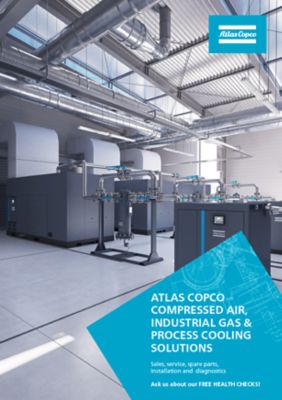Fly ash conveying
Voluntary efforts and government mandates requiring the capture and reuse of fly ash have played an important role in helping clean up the environment – especially our air.
In the past, hundreds of millions of tons of the substance, which is generated when products are burned (especially during coal combustion), were released into the air each year. Now, however, fly ash can be reused, especially for the production of cement.
The right system
While this is great for the environment, it adds additional work steps and logistical challenges to the operations of companies that generate fly ash. They not only have to capture the substance, which usually consists of particles measuring less than 100 microns, but also move it across production facilities to a place where it can either be reused or transported. Due to the frictional nature (it usually contains large amounts of silicon dioxide and calcium oxide) and high temperature of fly ash, it is not an easy material to handle and transport in an environmentally responsible manner – especially in bulk. In many cases, pneumatic conveying offers the optimal solution. The right pneumatic conveying systems offer a practical, reliable and safe solution to the challenge of transporting large quantities of fly ash. But what is the right system? That depends on the needs of the respective operation, which is why any company that has to move a lot of fly ash should first consider its specific requirements. For example, how long do the pipelines have to be, where does the fly ash has to be moved to and are there specific safety standards that have to be met? Due to the characteristics of the fly ash that has to be transported, such as its temperature, size and frictional nature, a robust, reliable system is needed.
How to convey fly ash
Fly ash can also be conveyed in different ways. It can be transported using either pressure (positive) conveying or vacuum (negative) conveying. The former uses compressed air at the start of the system to push the ash through the piping while it is “sucked” toward its destination when using the latter. Your specific requirements, such as the distance the material has to be transported, will determine whether positive or negative conveying is the right choice.
If you’re using a positive pressure system to convey your fly ash, you’ll need an air compressor or blower that delivers you the exact flow and pressure your system needs. An incorrectly sized blower or compressor can cause blockages, longer unloading times and requires more energy. Sizing a blower or compressor for pneumatic conveying is difficult and requires special calculation software. When you’re experiencing any of the above issues with your current system, make sure to do a free sizing check before you make your investment.
Need help optimizing your fly ash conveying system?
Not sure how to replace your old compressed air system with a new one? Let us help you. The right size of installation is crucial: not only does it help you save on energy costs, it also shortens unloading times and helps you avoid blockages. Calculating the right size of installation is difficult and requires specific software and skills. We can help you find the optimal dilute phase pneumatic powder conveying system by offering you a free sizing calculation.

